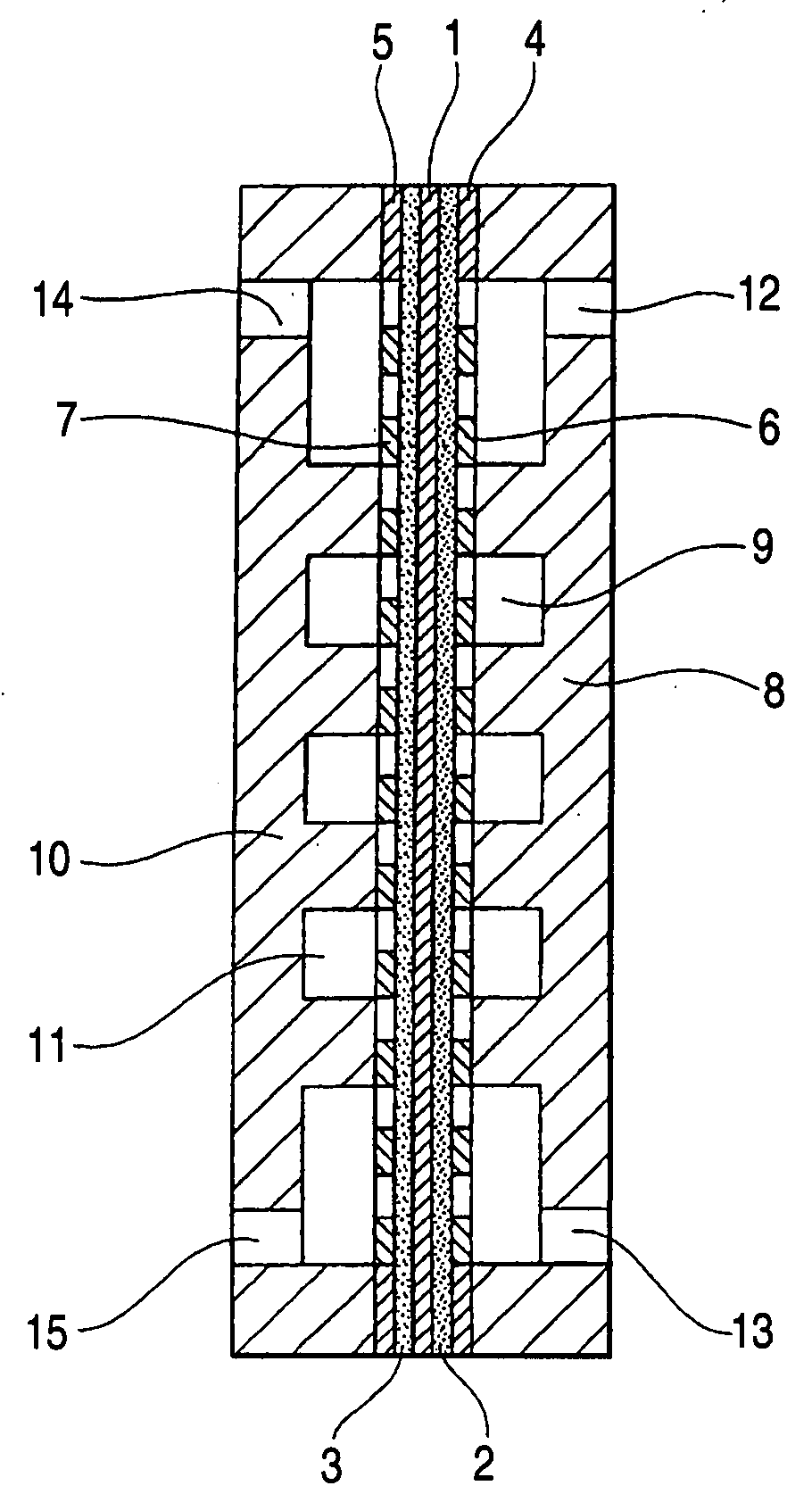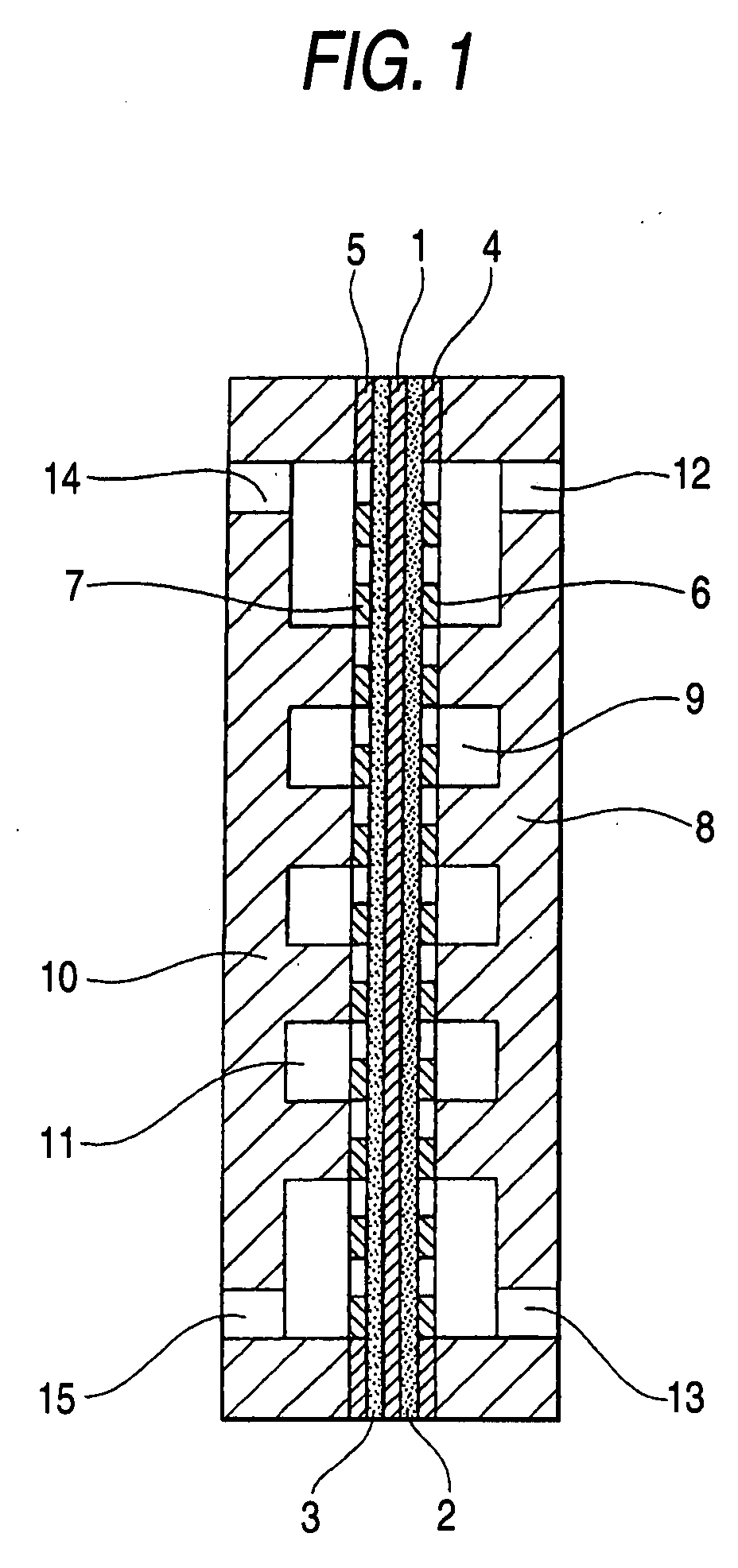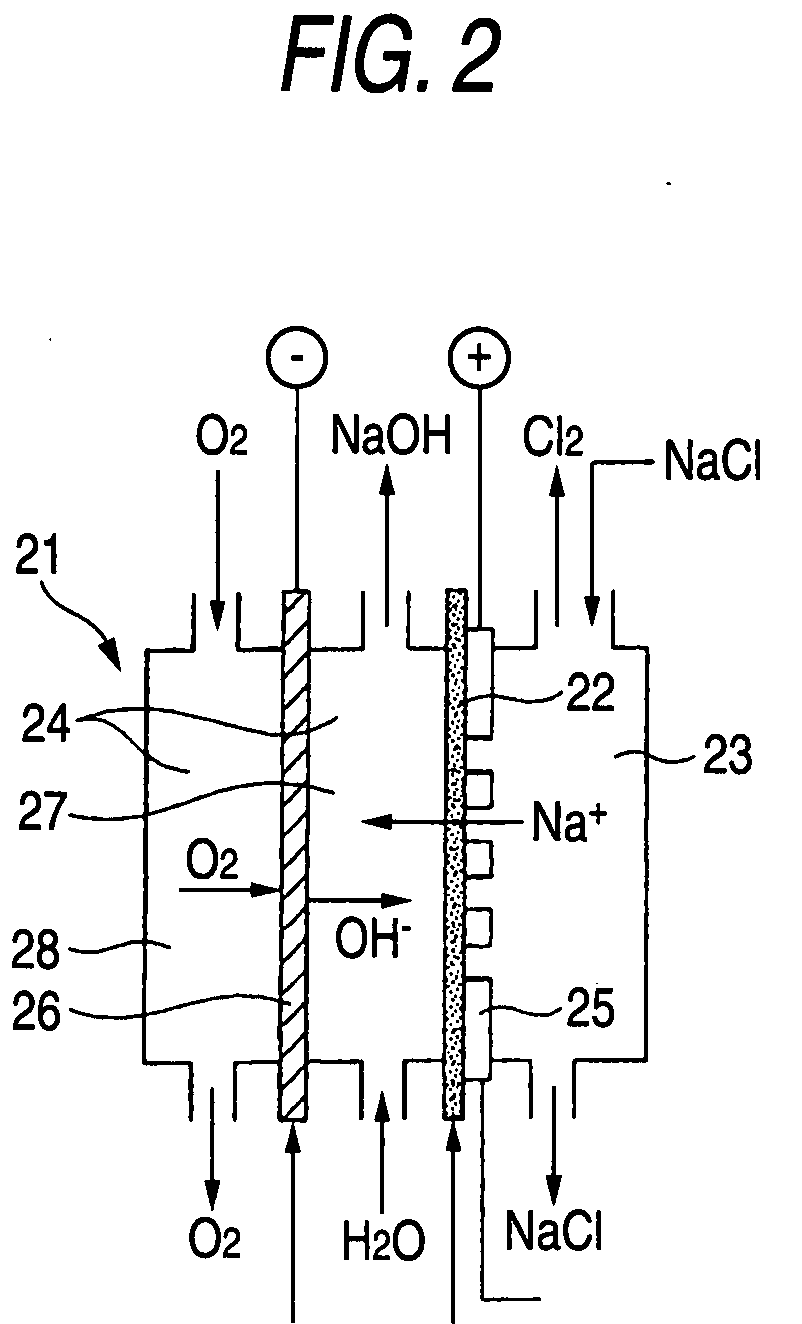Electrode catalyst for electrochemical reaction, process for producing the electrode catalyst and electrode for electrochemical reaction having the electrode catalyst
a technology of electrochemical reaction and electrode catalyst, which is applied in the direction of electrode coating, physical/chemical process catalyst, cell component, etc., can solve the problems of deterioration of electrolysis performance, insufficient lifetime and performance of gas diffusion electrode, and inability to further reduce the electric power consumption rate, etc., to achieve higher activity, longer lifetime, and high catalyst stability
- Summary
- Abstract
- Description
- Claims
- Application Information
AI Technical Summary
Benefits of technology
Problems solved by technology
Method used
Image
Examples
example 1
[0142]Diamond particles (average particle diameter: 40 nm) to which 1000 ppm of boron is added were poured in an aqueous solution of 1 mM of dinitrodiamine platinum, followed by agitating, further followed by drying at 60° C. Thereafter, under flow of 0.1 MPa of 10% H2+90% N2, the mixture was processed at 700° C. for 3 hr to form fine pores on a surface of an electrode. A dimension of fine pores was observed with AFM and found to distribute in the range of 5 to 10 nm and a depth thereof is about 5 nm. Platinum particles on the surface were remained only in diamond pores. An amount of precipitated platinum per gram of diamond was 0.05 g.
[0143]The catalyst particles, a slight amount of surfactant (trade name: Triton, produced by Aldrich Co., Ltd.), water, a polymer solid electrolyte solution (trade name: Nifion solution, produced by Aldrich Co., Ltd.) and an aqueous suspension of PTFE fluororesin (trade name: 30J, produced by Mitsui Fluorochemical Co., Ltd.) were added to prepare a sl...
example 2
[0148]Diamond particles same as that of example 1 were added to a mixed aqueous solution of 1 mM of ruthenium nitrate and 1 mM of dinitrodiammine platinum, followed by agitating, further followed by drying at 60° C. The mixture was processed at 600° C. for 5 min under flow of 0.1 MPa of 10% H2O and 90% N2 and thereby metal particles were precipitated.
[0149]After that, when processed for 5 hr under the same conditions, fine pores were formed on an electrode surface. Diameters of the fine pores were distributed in the range of 3 to 10 nm and the depth was about 3 nm. The catalyst particles on the surface were remained only in the diamond pores. An amount of precipitated catalyst per gram of diamond was 0.08 g. Similarly to example 1, a fuel cell test was carried out. The relationship between a voltage and a current was measured and a cell voltage of 0.68 V was obtained at current of 20A. After 50 days operation, there was found no deterioration of the cell performance.
example 3
[0150]Diamond powder containing 200 ppm of boron was prepared by means of a high pressure method. An average particle diameter of prepared powder was 1 μm. The powder was dipped in an aqueous solution of 1 mM of dinitrodiammine platinum, followed by processing at 600° C. for 20 min under flow of 0.1 MPa of 10% H2 and 90% N2, and thereby metal fine particles were precipitated. Thereafter, the powder was processed at 750° C. for 2 hr under flow of 0.1 MPa of 10% H2O and 90% N2, and it was observed with a SEM that fine pores were formed on an electrode surface. Diameters of the fine pores were distributed in the range of 10 to 20 nm and the depth thereof was about 10 nm. The catalyst particles on the surface were remained only in the diamond pores. An amount of precipitated catalyst per gram of diamond was 0.05 g. Similarly to example 1, a fuel cell test was carried out. The relationship between a voltage and a current was measured and a cell voltage of 0.55 V was obtained at current o...
PUM
| Property | Measurement | Unit |
|---|---|---|
| Temperature | aaaaa | aaaaa |
| Diameter | aaaaa | aaaaa |
| Diameter | aaaaa | aaaaa |
Abstract
Description
Claims
Application Information
 Login to View More
Login to View More - R&D
- Intellectual Property
- Life Sciences
- Materials
- Tech Scout
- Unparalleled Data Quality
- Higher Quality Content
- 60% Fewer Hallucinations
Browse by: Latest US Patents, China's latest patents, Technical Efficacy Thesaurus, Application Domain, Technology Topic, Popular Technical Reports.
© 2025 PatSnap. All rights reserved.Legal|Privacy policy|Modern Slavery Act Transparency Statement|Sitemap|About US| Contact US: help@patsnap.com



